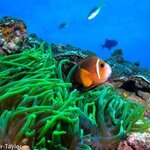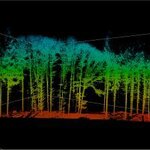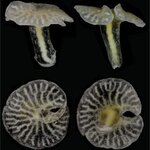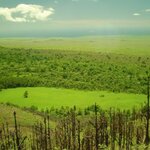Ecology & Zoology

New research has found clownfish larvae can swim up to 400 kilometers in search of a home, which makes them better able to cope with environmental change.
Clownfish spend their entire adult lives under the protection of their host anemone but as babies they must wander the open ocean.
As part of the international study, a team of researchers to southern Oman, where they collected samples of the only two known populations of the Omani clownfish, Amphiprion omanensis.
Clownfish spend their entire lives nestling in the protective tentacles of host anemones. Credit: Tane Sinclair-Taylor
"In…

Last decade, science faced an ecological puzzle: under hotter, drier conditions of global warming, forests should have been penalized but instead the rainforests thrived. It isn't the first time - the climate change that caused the death of the dinosaurs gave them a big boost also.
A new study in Nature Communications notes that trees have been growing significantly faster since the 1960s. The typical development phases of trees hasn't changed but they have accelerated by as much as 70 percent, find researchers from Technische Universität München using long-term data from experimental forest…

66 million years ago, a 10 km diameter meteorite hit the Yucatan peninsula with the force of 100 teratons of TNT. It left a crater more than 150 km across and the resulting mega tsunami, wildfires, global earthquakes and volcanism are believed to have wiped out the dinosaurs and made way for the rise of the mammals.
It is still evident in the Chicxulub crater, named after the nearby village. It's also evident in the rise of plant life, according to a study which finds that the meteorite impact that spelled doom for dinosaurs also decimated evergreen flowering plants - and that…

For lovers of wild foods, autumn means things like mushrooms and fungi of dizzying variety.
Intrepid treasure hunters scour the woods in search of delectable wild mushrooms and their not-quite-meat, not-quite-vegetable qualities.
A bonus: If you find some, you may be eating something not even known to science.
The Fungi Kingdom is enormously diverse and completely under-documented. Species are tough to know, and that is without counting the billions that have gone extinct without us ever knowing about them, but of the 10 million species likely out there, only about 100,000 have been…

At nearly 100 feet long and weighing as much as 170 tons, the blue whale is the largest creature on the planet, and by far the heaviest living thing ever seen on Earth. So there's no way it could have anything in common with the tiniest fish larvae, which measure millimeters in length and tip the scales at a fraction of a gram, right?
Not so fast, says L. Mahadevan, Professor of Applied Mathematics, Organismic and Evolutionary Biology and of Physics at Harvard.
Using simple hydrodynamics, Mahadevan and colleagues that a handful of principles govern how virtually every animal -- from…

What do leopards in India do when prowling at night? Like with smaller domestic cats in America, evidence from a GoPro video around their necks would probably horrify pet owners, but scat samples for leopards in India's Ahmednagar's district in Maharashtra tell the story.
Leopards mostly eat dogs, it turns out.
87 percent of their diet was made up of domestic animals, according to a new study led by the Wildlife Conservation Society. And that was mostly pets dog. 39 percent was man's best friend and 15 percent were even other cats. 17 percent was assorted wild animals…

Wasps in the genus Spasskia (family: Braconidae) have been found for the first time in China, including a species in that genus which is totally new to science.
The new species, Spasskia brevicarinata, is very small — male and female adults are less than one centimeter long. It is similar to a previously described species called Spasskia indica, but the ridges on some of its body segments are different.
The species epithet brevicarinata reflects a short ridge on its first tergite, as "brevi" is Latin for short and "carinata" is Latin for ridge.
This image shows an adult…

The number of California blue whales has rebounded to near historical levels - and they would be even higher if they didn't run into or get hit by commercial shipping.
Blue whales, nearly 100 feet in length and weighing 190 tons as adults, are the largest animals on earth. And they are the heaviest ever, weighing more than twice as much as the largest known dinosaur, the Argentinosaurus. As a species, they were considered hunted nearly to extinction but new international laws have put enforceable limits on catches of whales and blue whales seem to be the first to have recovered.
Decades ago,…

Two new species of sea-dwelling, mushroom-shaped organisms have been discovered.
Scientists classify organisms based on shared characteristics using a taxonomic rank, including kingdom, phylum, and species. In 1986, the authors of this study collected organisms at 400 and 1000 meters deep on the south-east Australian continental slope and only just recently isolated two types of mushroom-shaped organisms that they couldn't classify into an existing phylum.
The new organisms are multicellular and mostly non-symmetrical, with a dense layer of gelatinous material between the outer skin…

Parts of the iconic Galapagos Islands have been overrun by invasive plants from other parts of the world, according to results published in Neobiota which confirm that in the humid highland part of Santa Cruz Island in the Galapagos National Park, nearly half of the canopy of the vegetation is comprised of non-native trees, shrubs and grasses.
The core outcome from the study is a map and associated database that details the abundance of both introduced and native species over the landscape. This information is of great importance to managers.
This landscape was taken looking…